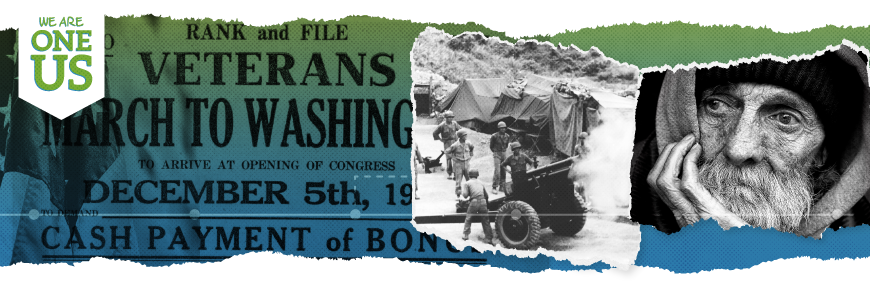
The veterans of World War II were welcomed home as heroes. The veterans of the Korean War received a warm homecoming. The veterans of the Vietnam War returned to a cold shoulder and a country on the verge of tearing itself apart.
Infantryman Steven A. Wowwk spent six months in Vietnam—January to June 1969—and was wounded twice in battle. He was sent home due to the severity of his second injury, and found a surprisingly hostile environment.
Wowwk said he and other wounded soldiers were being transported to a Boston hospital on a bus. As he looked out the window to the streets of Boston, he offered a peace sign to the pedestrians. One person responded to his gesture with a middle finger.
The anger Wowwk experienced was part of a larger antipathy brewing in the U.S. As the Vietnam War dragged on from 1955 to 1975, many Americans felt fatigued and angry—regardless of their opinion of the war.
Many Vietnam veterans claim that most people treated them with indifference and seemed uncomfortable listening to their stories from battle. Some people, however, saw returning soldiers as dangerous, violent symbols of an increasingly futile and terrible war—much like the individual Wowwk encountered.
The vast majority of men coming home from Vietnam, however, had no choice in participating in the war and were deeply scarred from what they witnessed overseas. Still, communities had a hard time supporting their returning soldiers through such a long, aimless war. Jerry Lembke, a Vietnam veteran and sociologist, once said that communities struggled to welcome one son home when another family’s son down the street just got sent off.
Multiple societal factors all converged in the 1970s to create a perfect storm that made it especially hard for veterans to reintegrate into civilian life. Veteran homelessness had been an issue in America since World War I, but it grew exponentially after Vietnam.
Vietnam veterans received little emotional support from their communities, as their neighbors generally did not want to think about the war anymore. For the thousands of veterans battling PTSD, anxiety and depression, this lack of understanding took a toll.
On top of that, the 1970s was the height of deinstitutionalization—when the majority of mental hospitals in the U.S. were closing. They were slowly being replaced by more healthy, ethical mental health centers, but these centers didn’t make up for the deficit in mental health care.
GI benefits were more sparse in the 70s economy, and some veterans struggled to find careers that suited their skills—especially if they were injured. To distract from looming mental illness and career difficulties, some fell into addiction. From there, The Churn pulled them under.
Of all the veterans who have experienced homelessness from World War II to the present, half of them are Vietnam veterans. Today, there is much more emphasis on protecting our veterans because of the epidemic of homelessness in the wake of Vietnam.
While Vietnam veterans came home to an indifferent-to-hostile society, the biggest catalysts for homelessness were the lack of mental health care, addiction treatment and job training. Several of the root causes of homelessness were abundant among veterans at this time, and there were few resources to address them.
Solutions for Change has learned from the shortcomings of the past to build a program that solves the root causes of homelessness. We also believe in offering empathy and kindness to all—especially those who sacrifice so much to serve our country.
There are about 37,000 veterans experiencing homelessness on any given day in 2020. Those at greatest risk are usually between the ages of 46 to 55 and lack family or community to turn to. We at Solutions for Change are dedicated to being a community veterans can always turn to. Solutions for Change offers career training, access to healthcare, shelter and a community that values and validates the experiences of all.
Some veterans continue to return home with PTSD and the increased risk for addiction and homelessness, but Solutions for Change works to ensure they find a support network that has learned from the mistakes of the past. We don’t want any veteran to be left behind—and if they are ready to change their life, we are ready to guide them out of The Churn.
This blog is in honor of our founder and CEO, Chris Megison, a Marine veteran and passionate advocate for homeless veterans. To learn more about Solutions Academy—our career training program—head over to solutionsforchange.org/our-work. Keep an eye out for our next history blog, where we will investigate how homelessness as we know it today formed from the challenges of the 1980s.

